A wildflower garden brings the beauty of nature into your backyard, transforming ordinary outdoor spaces into vibrant, colorful, and ecologically friendly havens. Unlike formal gardens, wildflower gardens offer a natural, relaxed aesthetic while attracting pollinators like bees, butterflies, and hummingbirds. Starting a wildflower garden from seed can be a deeply satisfying experience, allowing you to witness every stage of growth and design a garden that suits your preferences. Whether you’re looking to fill a small backyard, a large meadow, or container spaces, this comprehensive guide will walk you through every step of starting a wildflower garden from seed.
1. Choose the Right Location
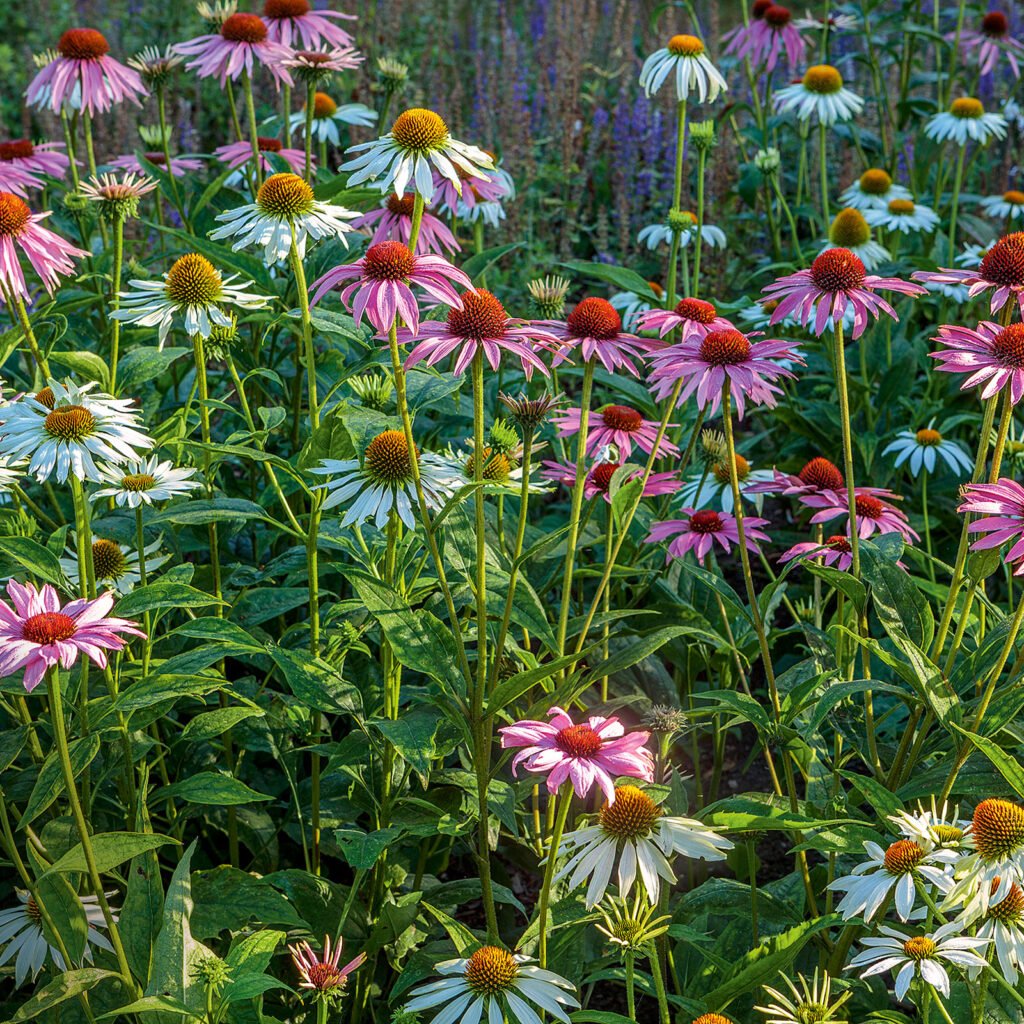
Location is critical when planting a wildflower garden. Most wildflowers prefer full sun, meaning at least 6 to 8 hours of direct sunlight daily. However, some species thrive in partial shade, so understanding the sunlight patterns in your garden is essential.
Consider these factors:
- Soil Type: Wildflowers are generally adaptable but perform best in well-draining soil. Heavy clay soils may need amending with organic matter to improve drainage.
- Slope: Avoid low-lying areas that may collect water and risk seed rot. Gentle slopes are ideal.
- Exposure: Areas sheltered from harsh winds will help young seedlings establish more easily.
By carefully selecting a location, you set the foundation for a thriving wildflower garden.
2. Choose Your Wildflower Seeds
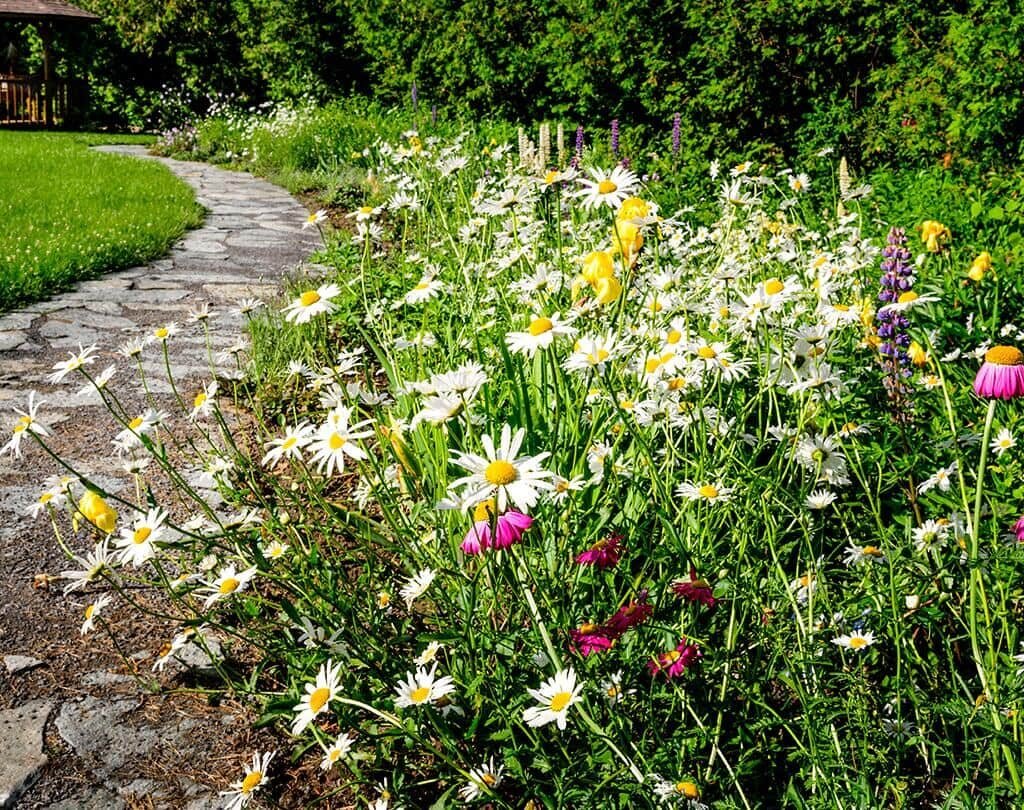
Not all wildflowers are created equal, and the seeds you select will define the look, bloom time, and ecosystem impact of your garden.
Types of Wildflowers:
- Annuals: Grow quickly, bloom in the first season, and complete their life cycle in one year. Examples: cornflower, cosmos, poppy.
- Perennials: Take longer to establish but return year after year, providing long-term color. Examples: black-eyed Susan, coneflower, lupine.
- Biennials: Complete their life cycle over two years, often producing foliage in the first year and flowers in the second. Examples: foxglove, hollyhock.
Tips for Choosing Seeds:
- Choose native species, as they are adapted to your climate and soil, require less maintenance, and support local wildlife.
- Consider bloom times to ensure continuous color throughout the season. A mix of early, mid, and late bloomers is ideal.
- Mix heights and colors for a natural, layered look that mimics meadows.
3. Prepare the Soil
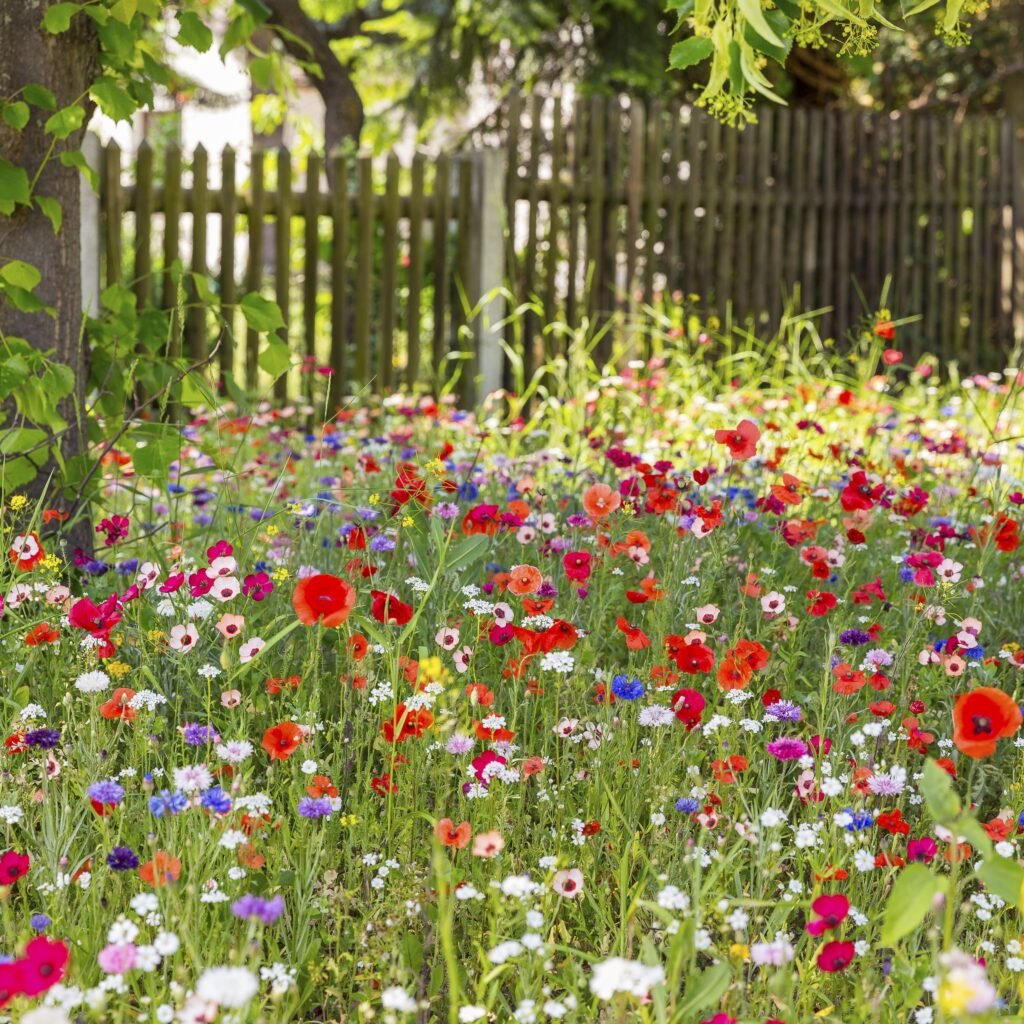
Unlike traditional garden beds, wildflowers don’t require highly enriched soil. In fact, too-rich soil can favor fast-growing grasses over wildflowers, so moderation is key.
Steps to Prepare Your Soil:
- Clear the Area: Remove existing grass, weeds, and debris. This prevents competition for sunlight and nutrients.
- Loosen the Soil: Lightly till or rake the soil to create a fine seedbed. Seeds need good contact with the soil to germinate.
- Optional Soil Amendments: If the soil is very poor, incorporate a thin layer of compost. Avoid heavy fertilization, which can favor weeds.
A well-prepared seedbed ensures strong germination and healthy seedlings.
4. Sow the Seeds
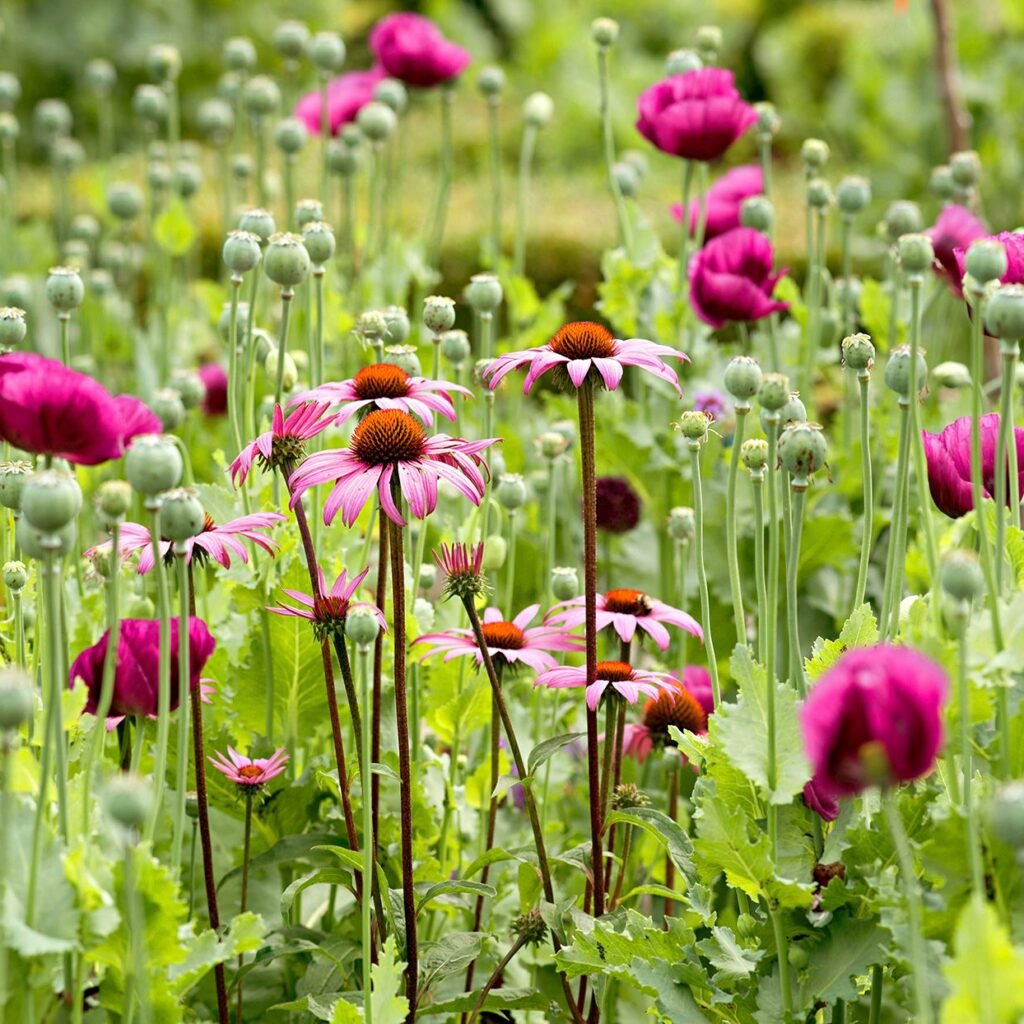
Sowing wildflower seeds requires patience and attention. Follow these steps for optimal results:
Step-by-Step Guide:
- Mix Seeds With Sand: This helps distribute seeds evenly and prevents clumping.
- Broadcast Seeds: Scatter seeds evenly across the prepared soil. Some seeds may require surface sowing, while others benefit from light covering. Always check the packet instructions.
- Rake Lightly: Gently rake the soil to ensure seeds make contact but don’t bury them too deeply. Most wildflower seeds need light to germinate.
- Water Gently: Use a fine mist to avoid washing away seeds. Keep the soil consistently moist until seedlings emerge.
Tip: For larger areas, you can mark sections and sow seeds in small patches, which creates a more natural meadow effect.
5. Watering and Care for Young Seedlings
After sowing, watering and proper care are crucial for seed germination and early growth.
Watering Tips:
- Keep the soil consistently moist but not waterlogged.
- Water gently to avoid displacing seeds.
- Reduce watering gradually as seedlings establish deeper roots.
Other Care Tips:
- Monitor for weeds, especially in the first few weeks. Hand-pulling is preferable to prevent damage to seedlings.
- Avoid heavy foot traffic on newly sown areas to protect fragile seedlings.
Young wildflowers are resilient once established, but initial care is essential for a successful garden.
6. Protect Your Garden
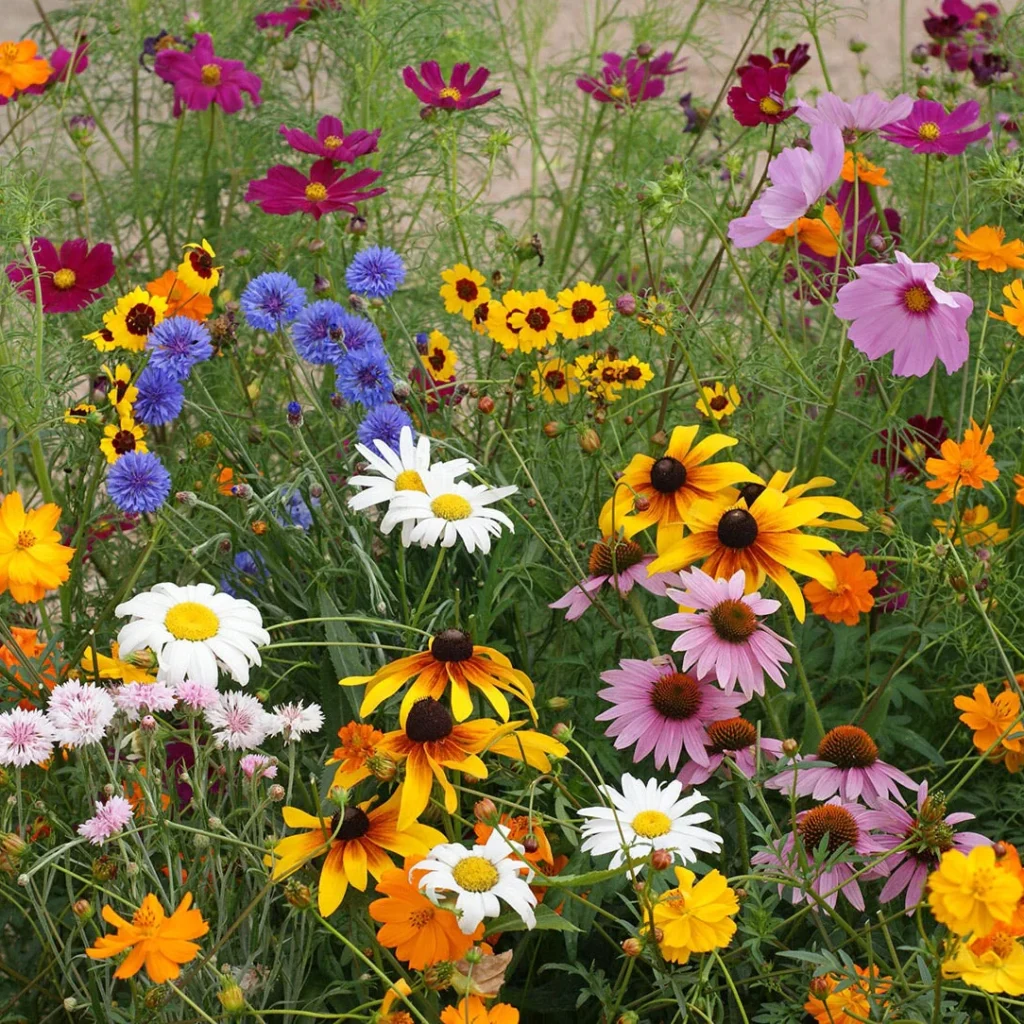
Wildflower gardens are generally low-maintenance, but they may attract pests or face environmental challenges.
Tips for Protection:
- Mulching: A thin layer of straw can protect seeds from birds and help retain moisture. Avoid thick mulch, which can block light.
- Fencing: Temporary barriers may be needed to keep out pets or wildlife.
- Pest Monitoring: Most wildflowers are naturally pest-resistant, but occasionally slugs or rabbits may nibble seedlings. Use natural deterrents or physical barriers if necessary.
With proper protection, your seeds have a higher chance of growing into a lush, blooming garden.
7. Encourage Continuous Bloom
To maintain a vibrant wildflower garden throughout the season:
- Deadheading: Remove spent flowers to encourage further blooming for annuals.
- Mowing/Trimming: For large meadows, mow lightly after flowering to prevent dominant species from taking over. Avoid cutting perennials too short; let them self-seed naturally.
- Succession Planting: For extended color, sow additional seeds every few weeks in small patches.
This ensures your wildflower garden stays colorful and lively all season long.
8. Embrace the Natural Look
Wildflower gardens are meant to mimic natural landscapes, so perfection isn’t the goal.
- Allow plants to grow in clusters and layers rather than evenly spaced rows.
- Include a variety of heights, colors, and textures.
- Let plants self-seed for a dynamic, evolving garden each year.
A wildflower garden is as much about biodiversity and natural beauty as it is about visual appeal.
9. Benefits of a Wildflower Garden
Starting a wildflower garden from seed offers more than just aesthetic appeal:
- Supports Pollinators: Wildflowers attract bees, butterflies, and hummingbirds, supporting essential ecosystems.
- Low Maintenance: Once established, wildflowers require minimal care compared to traditional gardens.
- Environmental Benefits: Native plants conserve water, reduce soil erosion, and provide habitats for wildlife.
- Cost-Effective: Seeds are inexpensive compared to buying mature plants, making this a budget-friendly gardening option.
- Educational Opportunity: Watching seeds grow into flowers teaches patience, biology, and an appreciation for nature.
These benefits make wildflower gardening both rewarding and eco-friendly.
10. Seasonal Considerations
Timing is crucial when starting a wildflower garden from seed:
- Spring Planting: Most annuals and perennials are best sown in early spring after the last frost.
- Fall Planting: Some perennials benefit from fall sowing, allowing seeds to undergo natural cold stratification.
- Climate Considerations: Research the best planting time for your region’s native wildflowers to maximize germination and bloom success.
By considering seasonal timing, you increase the chances of a successful and flourishing garden.
Conclusion
Starting a wildflower garden from seed is a fulfilling and environmentally friendly way to enhance your outdoor space. By carefully choosing seeds, preparing the soil, sowing properly, and providing attentive care, you can create a vibrant and sustainable garden that thrives year after year. Wildflower gardens not only beautify your yard but also support pollinators, conserve resources, and offer a serene, natural retreat.
With patience and creativity, even a small backyard can become a lush, colorful wildflower haven, inviting nature in and giving you the joy of watching every seed grow into a radiant bloom. Whether for personal enjoyment, ecological benefits, or both, a wildflower garden is a living testament to the harmony between humans and the natural world.
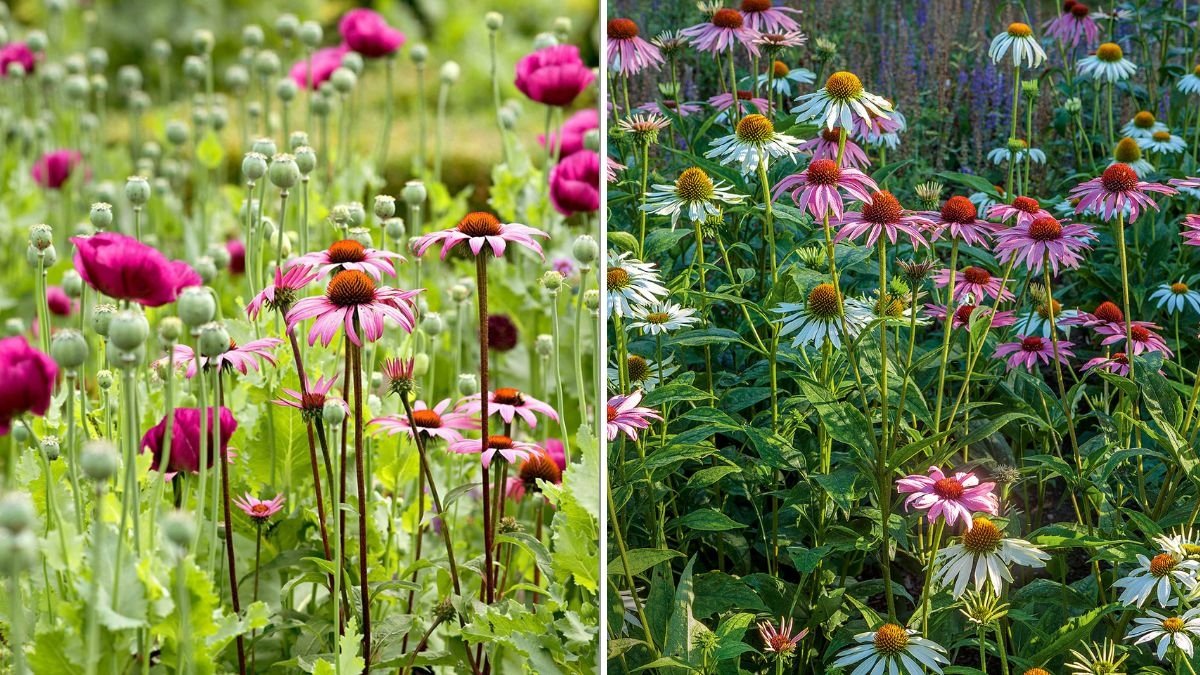





Leave A Comment